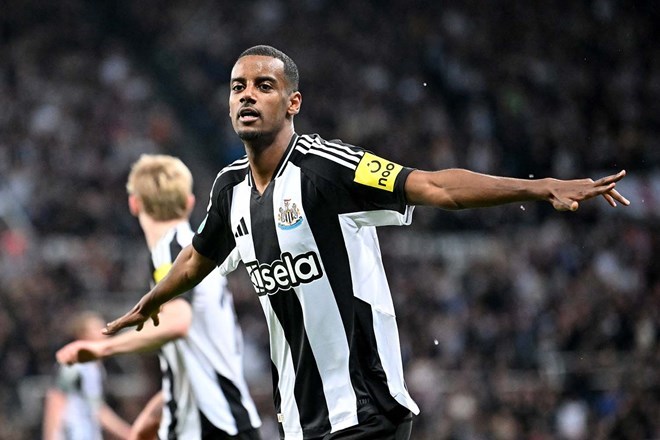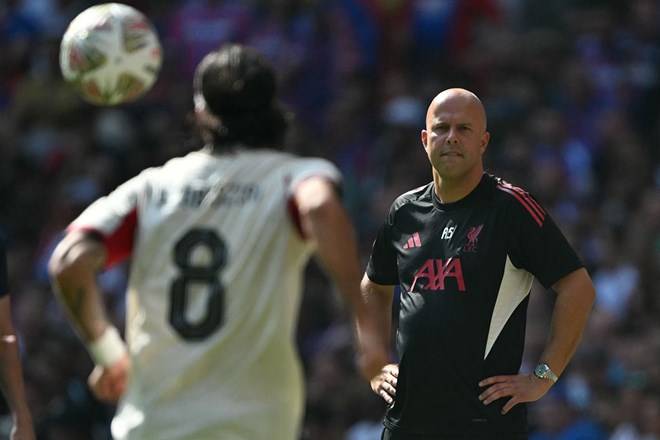On the surface, it is not difficult to understand why Liverpool decided to recruit Alexander Isak. The striker will turn 26 at the end of the month, and has scored over 20 goals in the Premier League in his last two seasons - only behind Erling Haaland. But Isak is not just a goal-setter, he is a modern centre-forward model.
Previously, when the 4-4-2 formation was still popular, striker pairs often fell into two types: a striker with a striker who hunted for goals, or a striker who provided assists to support the finisher. Today, the top strikers fully combine all three of those factors.
This is not completely new. The time of Kenny Dalglish - Ian rush or Niall Quinn - Kevin Phillips has gone far behind, and modern football is gradually becoming familiar with strikers such as Didier Drogba, Andriy Shevchenko or Radamel Falcao - who possess speed, fitness and technique.

Haaland, with his tall body, speed and superb finishing ability, is almost an "enhanced" version of the classic centre-forward model. However, although Haaland (1m93) is still considered the most comprehensive model of the combination of figure and speed, he is no longer the only case.
The summer transfer window saw a wave of changes in the striker position, and most of them followed the same pattern. Isak is 1m93 tall, Benjamin Sesko and Nick Woltemade are also 1m93, Viktor Gyokeres, Hugo Ekitike and Randal Kolo Muani are 1m87-1m89, while Liam Delap and Victor Osimhen are similar in height.
Despite their ideal figure, none of them are truly "target men". They are all mobile, have good technique, and rarely have to rely on movements to the post to receive the ball from long passes.
Isak, in fact, is not outstanding in aerial ability, and his slim figure makes it difficult for him to overwhelm the central defenders in one-on-one disputes. However, 4 of his 23 goals last season came from headers. That included a memorable goal against Arsenal.
Isak's strongest strength is his ability to move flexibly in attack, often receiving the ball from both the wing and in the penalty area. At Real Sociedad, he mainly played as a center forward, but was also deployed on both the left and right wings many times.
With Cody Gakpo and Mohamed Salah often caught up, Liverpool need a striker who can extend to open up space. Therefore, Isak's presence promises to help The Kop own an extremely versatile attack.
Isak can play the traditional striker role when he needs to pick up crosses, but the trend is to move skillfully, escape the position of being paired to find space. With an impressive breakthrough speed, Isak is likely to make the most of Florian Wirtz's cross-line passes to make a difference.
This shows that Liverpool's starting lineup will likely rotate with Isak or Ekitike. Like Isak, the French striker is also very flexible, not forced to play a pure centre-forward role.

At Eintracht Frankfurt, there was a time when Ekitike paired Omar Marmoush in a 4-4-2 formation. While that model is not necessarily the optimal way to exploit Salah, there is no reason to prevent Isak and Ekitike from playing together.
In the 4-4-2 formation, Gakpo can completely take on the left wing of midfield, while Szoboszlai - who has just proven his ability to play as a full-back - can move to the right as a tight midfielder, with Frimpong supporting him with overlapping moves.
It is reasonable to prepare for the future without Salah. The Egyptian star is 33 years old, his contract will expire in 2027, and next summer could be the right time to sell him.
With Salah gone, Liverpool will be less dependent on a 4-3-3 formation - the system that has made the club's identity for most of the past decade.











